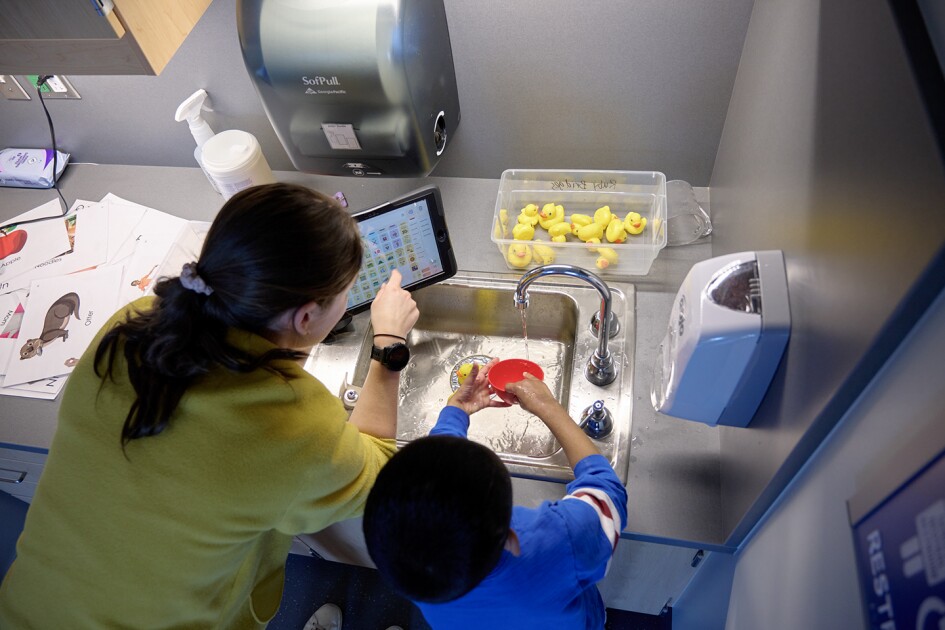
15 Apr 5 Tips to Help Students With Disabilities Feel Like They Belong
Creating a school community where students with complex learning or developmental needs feel welcomed and valued takes more than merely including them in classes or clubs, according to a leading researcher on the topic.
Erik Carter, the executive director of Baylor University’s Center for Developmental Disabilities, has developed what he calls the 10 dimensions of belonging, a list of principles that, together, create an environment in which all students—but particularly those with disabilities who have historically been excluded—feel as if they authentically belong.
The principles begin with allowing students with disabilities to be present in the same spaces as their peers, then invited, and ultimately accepted, supported, befriended, needed, and loved.
There are some tangible steps school and district leaders can take today to begin working to create this kind of environment, Carter said. All students stand to benefit, he said.
1. Understand the difference between ‘inclusion’ and ‘belonging’
There is a difference between simply including students with disabilities in classes and activities and deliberately creating a community in which all students feel as if they belong and are valued, Carter said.
Inclusion often refers to students with disabilities “just being present,” he said, whereas belonging is “more about how we see one another and the relationships formed within those activities in which we are present.”
It’s an important distinction, he said, because students who experience a sense of belonging are more excited about and likely to show up for school each day. They’re also more likely to be “primed and ready to learn with other kids in your classrooms or in extracurriculars.”
“Belonging really is inextricably linked to your learning component,” Carter said.
2. Reflect on current practices
School and district leaders should take an honest inventory of how their students experience school.
Rather than “just assuming and declaring that we are a community of belonging” solely because students with disabilities participate in some classes or activities with their peers, Carter said, “we need to be intentional about noticing whether students are actually experiencing a sense of belonging.”
It can be uncomfortable and painful to admit that any group of students may not feel completely valued and welcome, he said, but it’s important to be honest in your observations.
What do kids’ relationships look like? Are programs and services siloed so that students who need additional support are routinely excluded from activities or classes or even portions of them? Do leaders have high expectations for students with disabilities?
Researchers have in recent years “learned a lot more about the practices that lead toward belonging,” Carter said.
Those include things like peer-mediated supports, in which a student who has disabilities may work with a peer who doesn’t have disabilities on lessons or activities, he said. That gives students of all abilities the chance to “come to know each other, work together, and, out of that, perhaps develop some friendships and reciprocal relationships with other kids, which is really at the heart of belonging.”
3. Ask students how they feel
One of the most important steps to assessing and improving students’ sense of belonging is to simply ask them about their experiences in focus groups or one-on-one conversations, Carter said. That exercise should include questions to discover both what students feel is working well and what they enjoy, and how they may feel separated from their peers.
It can be a tricky task if some students with disabilities cannot communicate verbally or in other traditional ways, he said, so it may require a more observational approach, like interpreting their body language when they arrive at school, which can communicate their enthusiasm about attending.
4. Collect data
Anecdotal observations of students are important, but so are data, Carter said.
Some possible data to track, according to Carter, include: the extent to which students with disabilities are participating in general education classrooms or being pulled out for support and the extent to which students with disabilities are taking part in extracurriculars, clubs, and volunteer opportunities.
“There’s a whole set of indicators that schools might pick as helping them track their movement toward more widespread experience of belonging for all students but particularly for students with disabilities,” he said.
5. Make the work a priority
Ultimately, research shows that all students—including those with disabilities—perform better in school when they feel they are valued and belong there, Carter said.
To ensure all students feel that way about school, educators must make it a priority to foster a sense of belonging, he said. School and district leaders must bring the same emphasis that they do to academics, not only ensuring that students are prepared for postsecondary life but that they also feel accepted and valued while they’re in school, Carter said.
“If there’s not a similar commitment and intentionality around belonging, it will always get pushed to the back burner, or we’ll always think we don’t have the time to get to it, which is a disservice to the kids we have a commitment to serve,” Carter said.


No Comments